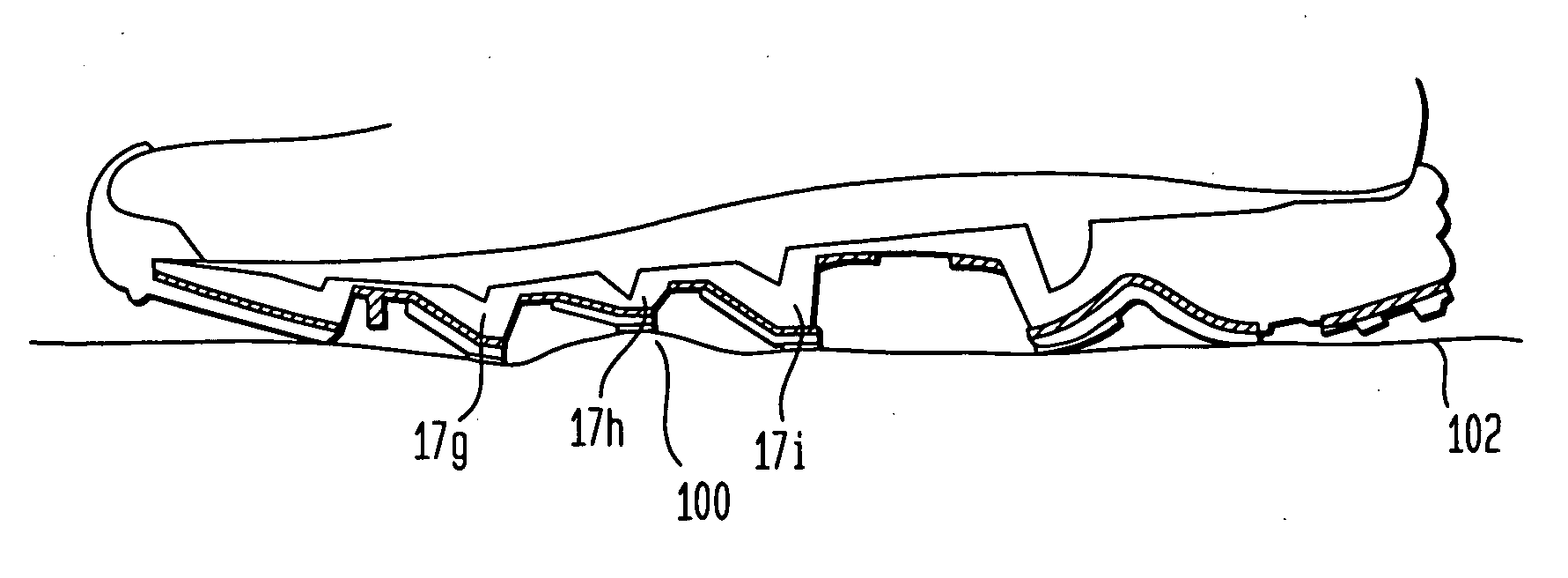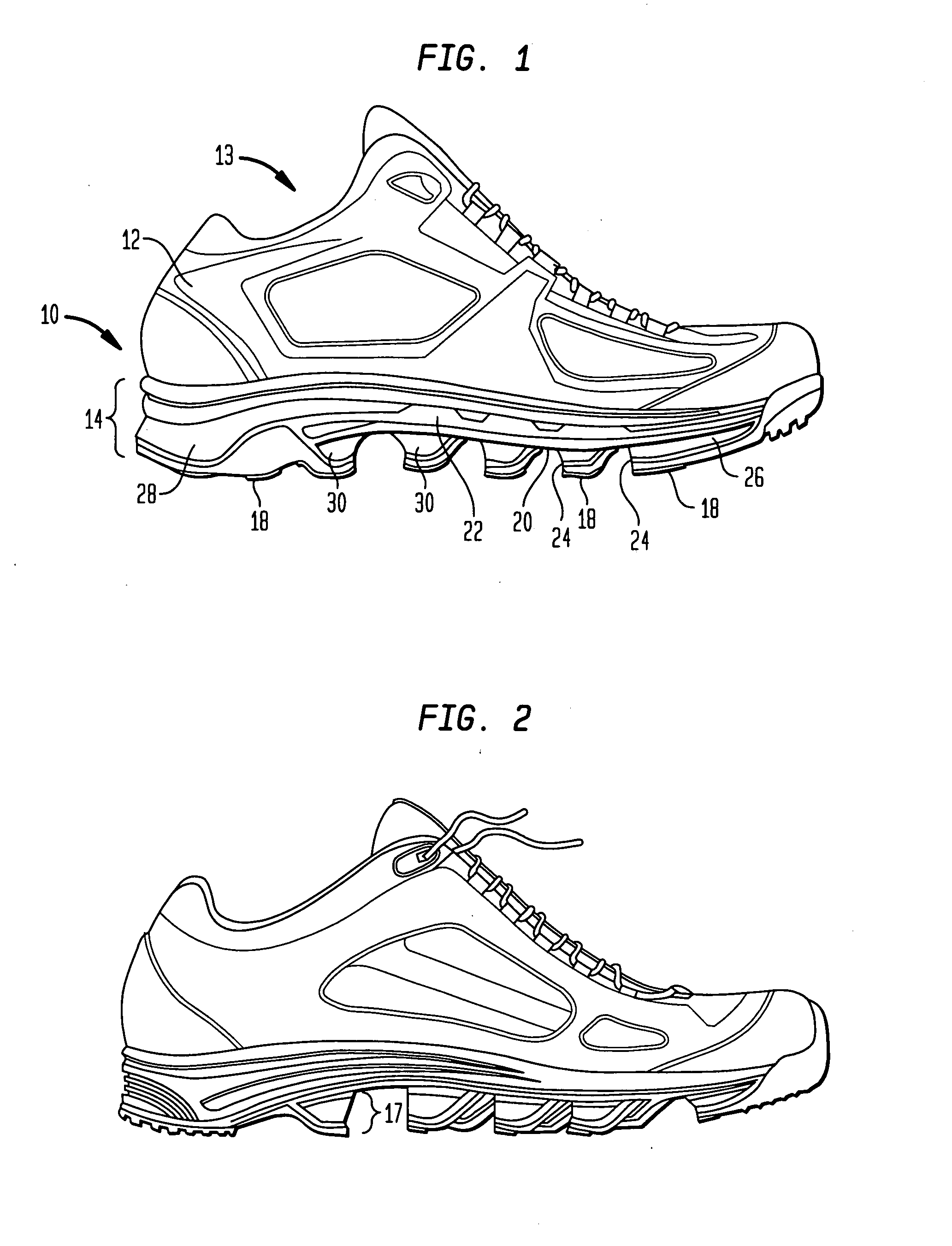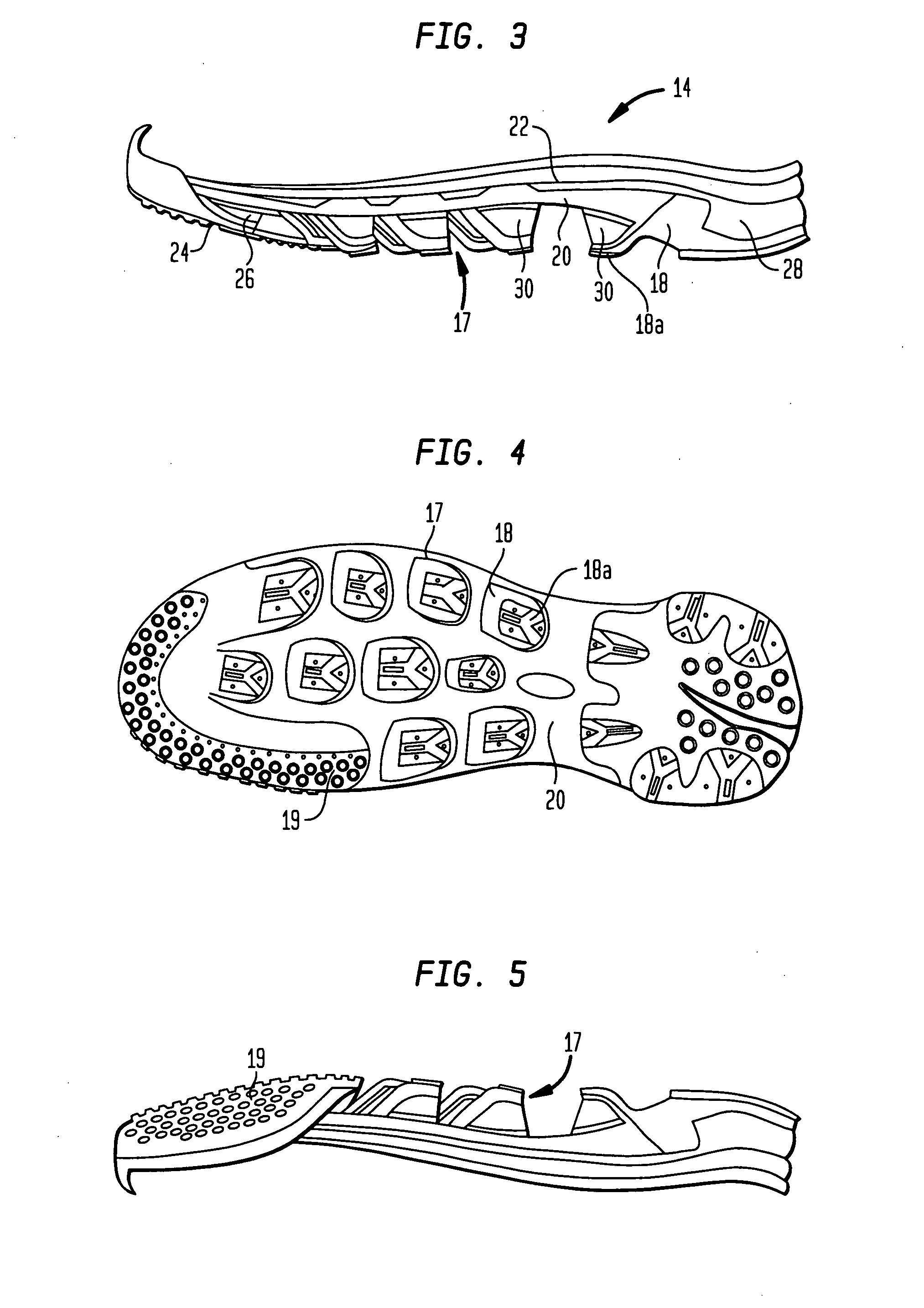Footwear with independent suspension and protection
a technology of independent suspension and protection, applied in the direction of fastenings, uppers, bootlegs, etc., can solve the problems of instability and motion control, bruising and risk of injury, and the midsole allows the heel to move into the midsole, so as to reduce instability
- Summary
- Abstract
- Description
- Claims
- Application Information
AI Technical Summary
Benefits of technology
Problems solved by technology
Method used
Image
Examples
Embodiment Construction
[0053] Referring now to the drawings, wherein like reference numerals represent like elements, there is shown in FIG. 1 an article of footwear according to an embodiment of the present invention. The particular article of footwear shown in FIG. 1 is in the form of an athletic shoe having an upper 12 and a sole 14. However, it is to be understood that the present invention could be implemented with any type of footwear, including sandals, boots, dress shoes, etc. Upper 12 is designed to receive the foot of a wearer by defining a portion of foot receiving cavity 13 therein. Upper 12 is structured to securely hold the wearer's foot and, to the extent possible, maintain the foot in contact with sole 14. Upper 12 is also preferably designed to provide support for the foot and to protect the foot from injury. Preferably, upper 12 covers the metatarsal and toe region of the foot as well as the instep portion and the heel portion of the foot.
[0054] While upper 12 may be of any configuratio...
PUM
| Property | Measurement | Unit |
|---|---|---|
| distances | aaaaa | aaaaa |
| distances | aaaaa | aaaaa |
| distances | aaaaa | aaaaa |
Abstract
Description
Claims
Application Information
 Login to View More
Login to View More - R&D
- Intellectual Property
- Life Sciences
- Materials
- Tech Scout
- Unparalleled Data Quality
- Higher Quality Content
- 60% Fewer Hallucinations
Browse by: Latest US Patents, China's latest patents, Technical Efficacy Thesaurus, Application Domain, Technology Topic, Popular Technical Reports.
© 2025 PatSnap. All rights reserved.Legal|Privacy policy|Modern Slavery Act Transparency Statement|Sitemap|About US| Contact US: help@patsnap.com



